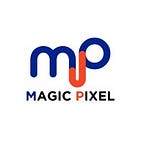Improve site performance and lighthouse scores with a server-side tag manager
Server-side tag managers execute tags on the server instead of the client’s browser. This reduces the number of calls from the browser and turbocharges webpage loading times, which can also increase your lighthouse scores. While improving the security and confidentiality of the data collected.
So, let’s dive into how exactly server-side tagging improves website and mobile app performance.
How a server-side tag manager improves site performance?
1. Unified data collection
Server-side tagging delivers unified data collection on a server instead of on the browser. The data collected on the server is further processed before sending them to partners and third-party vendors. Your server-side strategy eliminates the need for countless calls to partners from the browser. All you would need is a single query to the server. The data is processed, aligned, and segregated among the partners who need to receive respective data.
Server-side tagging technology reduces the volume of scripts needed on websites. With fewer tags to process, page loading time decreases. Both on the web or in mobile environments, this treatment enhances the user experience. Unified data collection provides better security and confidentiality by making the data invisible with tracking IDs. On the contrary, in client-side tagging, data is always under the threat of being exposed.
Unified data collection provides better security and confidentiality by making the data invisible with tracking IDs.
2. Firing fewer tags
Most tag managers collect and process user data before sending them to partners and third parties directly from the browser. This process goes on a daily basis. This involves executing more numbers of tags. Higher the number of tags, more will be the page loading times. This reduces the quality of the user experience and sometimes even the conversion rate.
Server-side tagging reduces the number of tags being fired from the browser, improving the page loading time and hence the performance.
3. Lower bounce rates
Research confirms that the probability of bounce rate increases by 32% if the page load time increases from 1 to 3 seconds. Many other studies have shown that longer page loading times equate to higher bounce rates. Google has also stressed the need for a better user experience with lower bounce rates and page load time. It has provided a direct correlation between improved loading times to improve conversions on e-commerce digital interfaces.
4. Better Conversion and sales
Aligning backend product inventory, multi-user purchase requests, and actual purchase checkout requires your website or ecommerce mobile app to multitask. Leaving multiple tags to load on the browser would shift the user’s interest to your competitor or another option. Slow websites and apps dependent on browser side tagging loose on high margin product sales and competitive interfaces.
Server-side tagging eliminates the threat of slow loading. It facilitates better:
Server-side tag managers also provide a more robust data analytics layer for previously stored customer data.
A recent research study confirmed by Google shows that a decrease in page load times for mobile sites improved progression rates for every step of the purchase funnel for all brands surveyed. And for retail sites every 0.1 second reduction in mobile site speed on average increases average order value by nearly 10 percent.
Deliver an improved site experience for your customers
There is a constant tussle between Developers and Digital Marketers about prioritizing site performance or measuring and generating traffic. Magic Pixel can do both.
With server-side tagging from Magic Pixel, One can drastically reduce network calls and improve site speeds. You can measure the success of campaigns when we say to improve your site experience. server-side tagging loads tags on the server allowing data to be treated as the first party.
You can identify and remove unnecessary pixels. Server-side tagging increases the visibility of your website across browsers bypassing the ad blocks. It reduces the page load time and therefore the bounce rate too.
Originally published at https://magicpixel.io on March 25, 2021.
